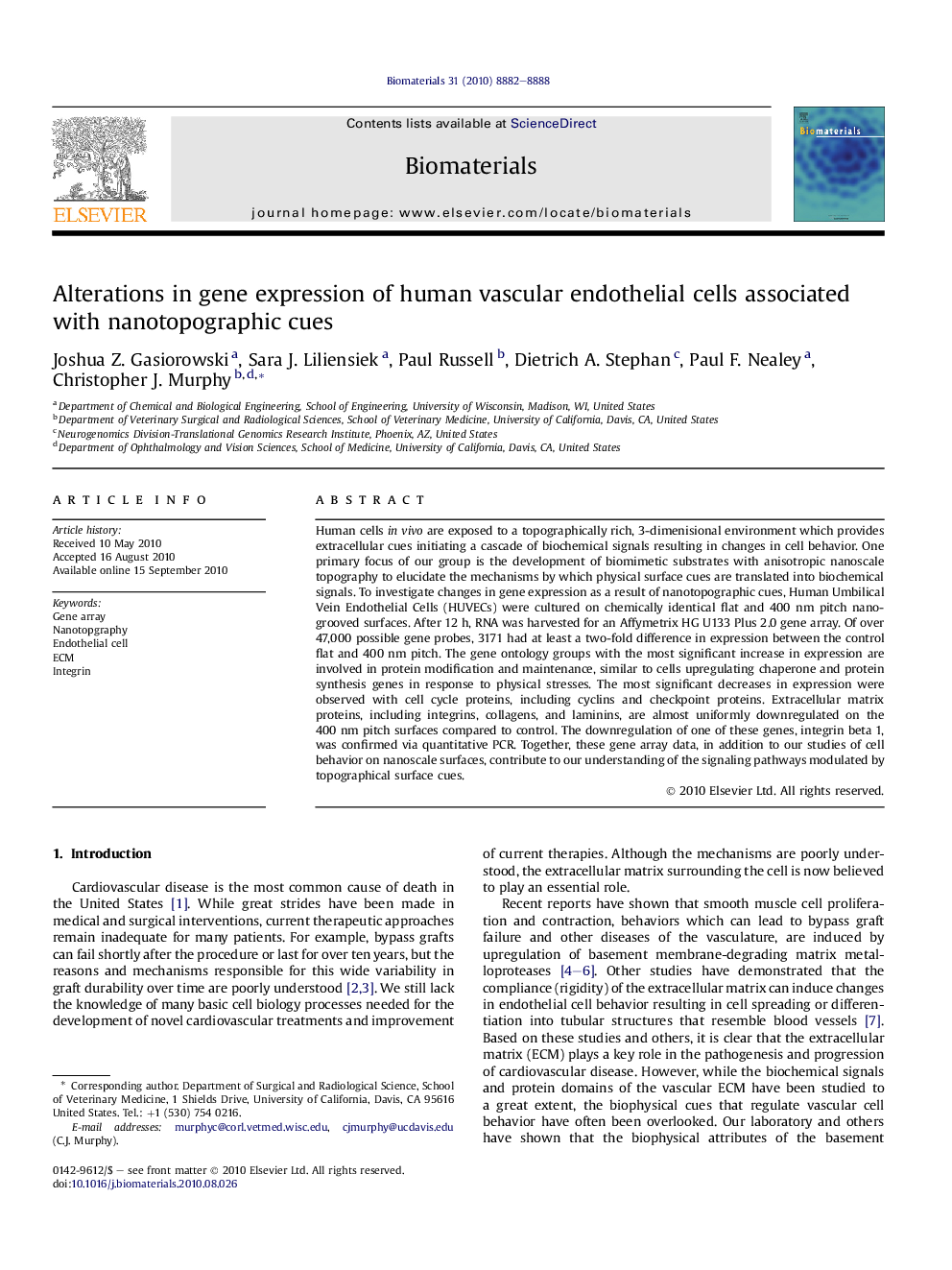| Article ID | Journal | Published Year | Pages | File Type |
|---|---|---|---|---|
| 8733 | Biomaterials | 2010 | 7 Pages |
Human cells in vivo are exposed to a topographically rich, 3-dimenisional environment which provides extracellular cues initiating a cascade of biochemical signals resulting in changes in cell behavior. One primary focus of our group is the development of biomimetic substrates with anisotropic nanoscale topography to elucidate the mechanisms by which physical surface cues are translated into biochemical signals. To investigate changes in gene expression as a result of nanotopographic cues, Human Umbilical Vein Endothelial Cells (HUVECs) were cultured on chemically identical flat and 400 nm pitch nanogrooved surfaces. After 12 h, RNA was harvested for an Affymetrix HG U133 Plus 2.0 gene array. Of over 47,000 possible gene probes, 3171 had at least a two-fold difference in expression between the control flat and 400 nm pitch. The gene ontology groups with the most significant increase in expression are involved in protein modification and maintenance, similar to cells upregulating chaperone and protein synthesis genes in response to physical stresses. The most significant decreases in expression were observed with cell cycle proteins, including cyclins and checkpoint proteins. Extracellular matrix proteins, including integrins, collagens, and laminins, are almost uniformly downregulated on the 400 nm pitch surfaces compared to control. The downregulation of one of these genes, integrin beta 1, was confirmed via quantitative PCR. Together, these gene array data, in addition to our studies of cell behavior on nanoscale surfaces, contribute to our understanding of the signaling pathways modulated by topographical surface cues.
